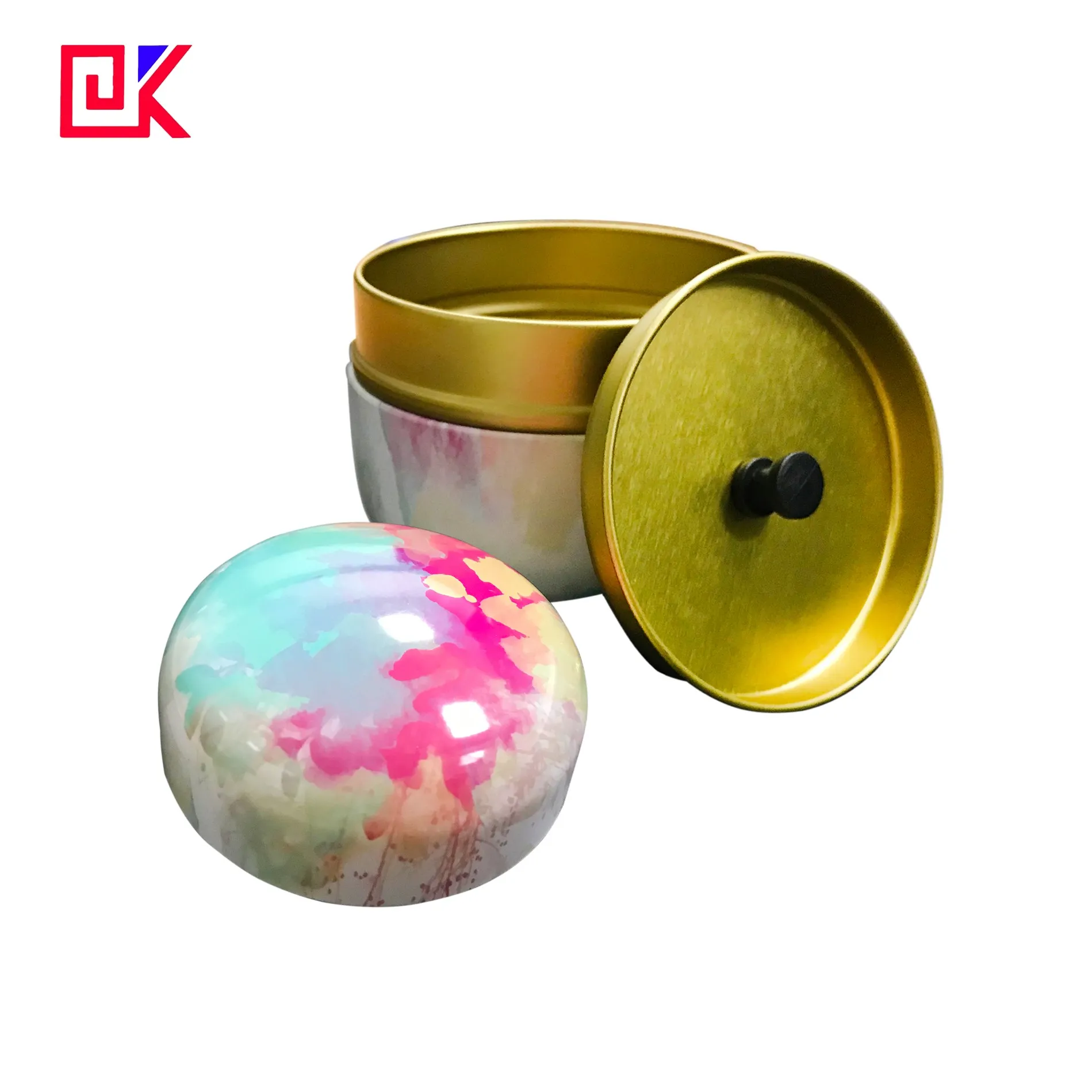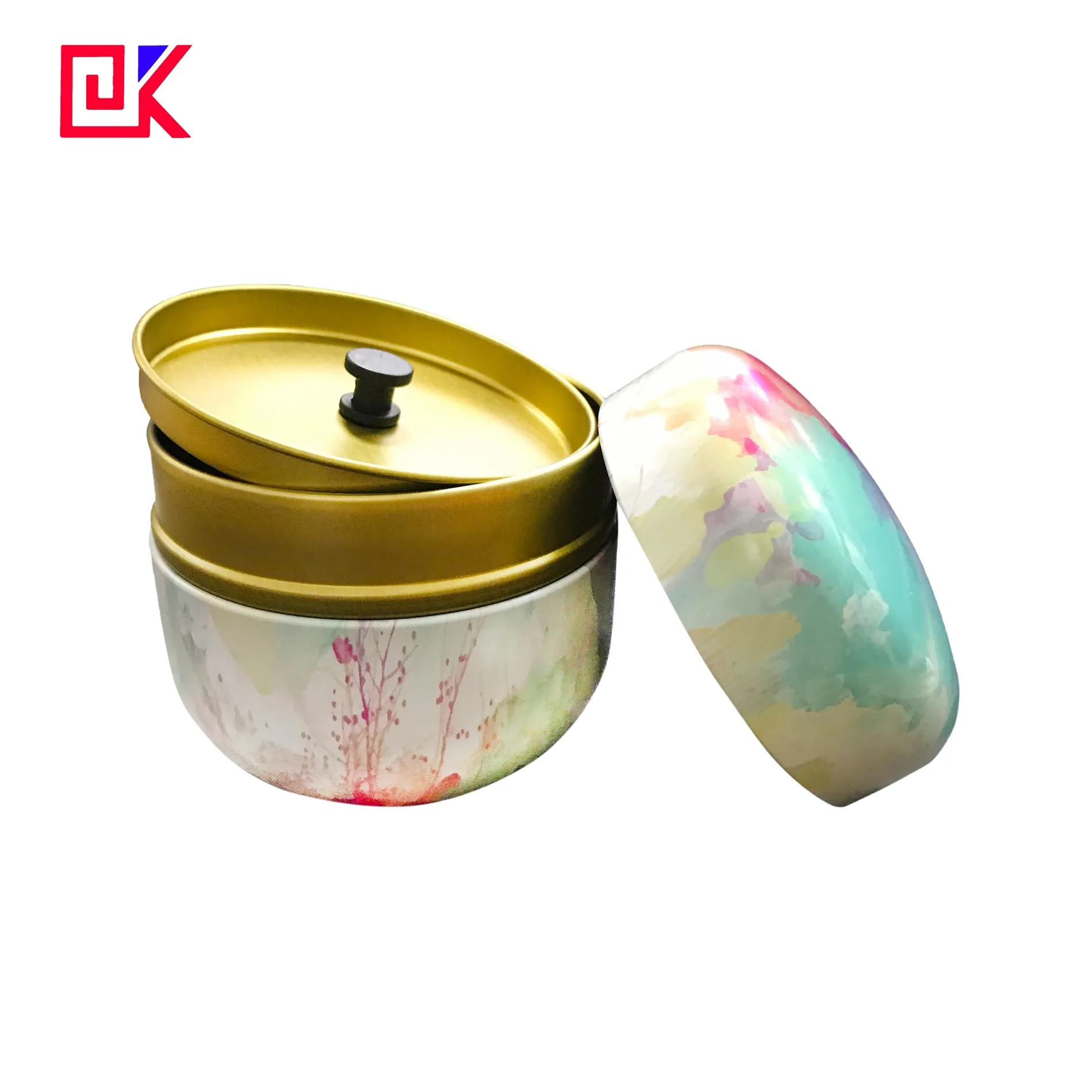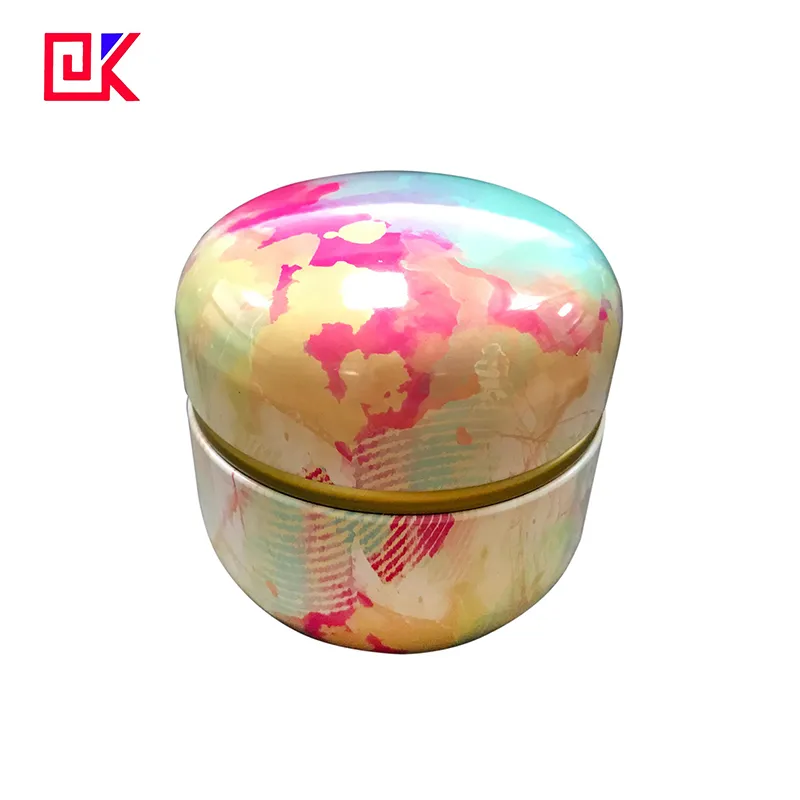In today's packaging market, containers made of tinplate and plastic are widely used in many fields such as food, beverages, and daily necessities. Each material has its own unique advantages and disadvantages. Which one is more suitable for the needs of different products?
This article will help you understand the differences between tinplate containers and plastic containers through multi-faceted analysis, and answer how to choose the right packaging container according to your needs.

What is a tinplate container?
1. What material is tinplate made of?
Tinplate is a specially treated tin-plated iron material, that is, a thin layer of tin is plated on a thin iron sheet to form an iron material with good corrosion resistance. Due to the presence of tin on the surface, tinplate can effectively prevent the iron material from directly contacting air and moisture, thereby slowing down oxidation and corrosion. This material is hard and shiny, and is widely used in the manufacture of various packaging containers, such as food cans, beverage cans, paint buckets, etc.
2. What are the characteristics of tinplate container?
The advantages of tinplate containers are mainly reflected in the following aspects:
● Strong and durable: tinplate containers have high strength and can effectively resist external impacts and protect internal items from damage.
● Good sealing: tinplate containers have strong sealing, can isolate air and moisture, and are suitable for packaging food, beverages and other products that need to be stored for a long time.
● Strong light isolation: tinplate containers have a good barrier effect on light, which can prevent light from damaging the nutritional components of food and help extend the shelf life of products.
● High and low temperature resistance: tinplate containers have good temperature resistance and can withstand high or low temperature changes. They are suitable for packaging heated or refrigerated foods.
What are the characteristics of plastic containers? What products are suitable?
1. What are the advantages of plastic containers?
The reason why plastic containers are widely used is mainly due to their light weight and easy processing. Compared with tinplate, plastic containers have certain advantages in the following aspects:
● Light weight: Plastic materials are light in weight and easy to carry. They are suitable for packaging light foods such as beverages, fruits, and snacks.
● Low cost: The production cost of plastic containers is relatively low, so they are widely used in areas that require mass production, such as fast-moving consumer goods and daily necessities.
● Easy to shape: Plastic materials are soft and suitable for making containers of various complex shapes, which can design packaging styles more flexibly.
2. What are the disadvantages of plastic containers?
Although plastic containers are widely used, they have shortcomings in terms of environmental protection and durability:
● Not resistant to high temperatures: Most plastic containers will deform, melt, or even release harmful substances at high temperatures, and are not suitable for packaging foods that need to be heated.
● Poor corrosion resistance: Plastic materials are easily affected by grease and acidic substances and deform or break, and are not suitable for packaging products with strong acidity or high oil content.
● Light-oxidation aging: Plastic containers are prone to aging and discoloration under the long-term action of light and air, affecting the appearance and quality of the product.
Which is more suitable for food packaging, tinplate container or plastic?
1. What are the advantages of tinplate container in food packaging?
In the field of food packaging, tinplate containers have become the preferred material for many perishable foods due to their sealing and corrosion resistance. For example, canned food, coffee beans, tea and other foods that require high sealing of packaging usually use tinplate containers to isolate air and moisture, thereby maintaining the original flavor and nutrients of the food. In addition, the good light-proof property of tinplate containers can prevent light from damaging food, and is suitable for storing foods rich in vitamins.
2. How suitable are plastic containers for food packaging?
For some fast-moving consumer goods and ready-to-eat foods, plastic containers are more common. Its lightness and easy-to-carry characteristics make it widely used in beverage, snack and fast food packaging. For example, products such as mineral water bottles, yogurt cups, and instant noodle bowls generally use plastic containers, which are convenient for consumers to carry and eat. However, plastic containers are not as good as tinplate in protecting food, and are suitable for products consumed in a shorter period of time.

Tinplate container and plastic: Which is more environmentally friendly?
1. Is tinplate container more environmentally friendly?
Tinplate container has good recyclability. After recycling and smelting, tinplate containers can be reused to make new steel products, which is not easy to pollute the environment. At the same time, the decomposition cycle of tinplate containers is shorter than that of plastics, and no microplastics that are difficult to decompose will be produced, reducing the pollution of soil and water sources.
2. What are the environmental problems of plastic containers?
Although plastic containers can be recycled, the actual recycling rate is low, resulting in a large amount of waste plastics flowing into the environment, causing pollution. Plastics have a long decomposition cycle, and harmful substances may be released during the decomposition process, and microplastics will be formed, which will harm the ecosystem. Therefore, when choosing packaging materials, consumers and manufacturers should give priority to packaging that is more recyclable and less harmful to the environment.
How should the packaging selection of different foods and daily necessities be considered?
1. How to choose containers for food packaging?
● Foods with high acidity or high fat content: For this type of food, it is recommended to choose tinplate containers. It has good acid resistance and corrosion resistance, and can avoid chemical reactions between acidic components and packaging materials.
● Foods that need to be stored for a long time: such as canned food, coffee beans, tea leaves, etc., have high requirements for sealing and light protection, and it is more appropriate to choose tinplate containers.
● For fast-moving consumer goods that are consumed in the short term: such as beverages, fast food, etc., plastic containers are more in line with the needs because of their lightness and portability, and are convenient for consumers to use in daily life.
2. How to choose daily necessities packaging containers?
For daily necessities such as detergents and cosmetics, because their ingredients may contain volatile substances or corrosive chemicals, tinplate containers have good sealing and chemical resistance, and are not easily affected by chemical ingredients; while plastic containers are suitable for the packaging and transportation of daily necessities to reduce damage.

How should consumers choose suitable packaging containers?
1. Food safety is the primary consideration
The selection of food packaging containers should be based on safety as the primary criterion. Consumers should pay attention to the material and composition of the product packaging when purchasing, and choose packaging marked with the "food grade" logo to ensure that it meets the relevant safety standards for food contact materials.
2. Consider portability and usage scenarios
Different products have different usage scenarios, and consumers should choose suitable packaging containers according to actual needs. Daily fast-moving consumer goods are suitable for light plastic packaging, while long-term storage food at home should choose tinplate containers with better sealing.
3. Environmental awareness guides consumer choices
Against the background of increasing environmental awareness, choosing packaging containers with strong recyclability and little impact on the environment is a rational consumer choice. Consumers can give priority to products with "recyclable" logos on packaging materials to contribute to reducing environmental pollution.
How to make a suitable choice between tinplate and plastic containers?
Tinplate containers and plastic containers have their own advantages and disadvantages and are suitable for different packaging needs. Tinplate containers are suitable for food or daily necessities that require long-term storage and high corrosion resistance, while plastic containers are suitable for the packaging needs of daily consumer goods with their lightness and economy. Consumers can make rational choices based on the purpose of the packaging, the characteristics of the food, and environmental protection requirements.
Located in Guangdong, Foshan Dekai Metal Packaging Co., Ltd. is a leading factory specializing in tinplate containers and aerosol cans. Our state-of-the-art equipment and ISO9001 certification ensure reliable quality and innovative designs. With an annual output exceeding 300 million units, we cater to businesses seeking bulk purchasing, discounted prices, and wholesale options. Contact us for affordable, high-quality solutions tailored to your specific needs. Take advantage of our promotions and competitive quotes today.

